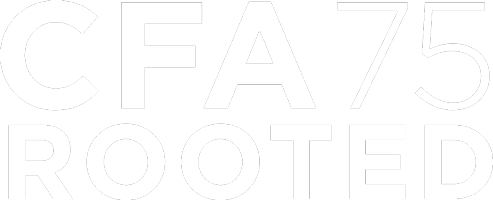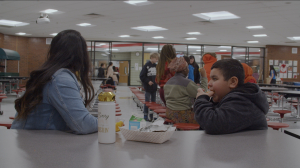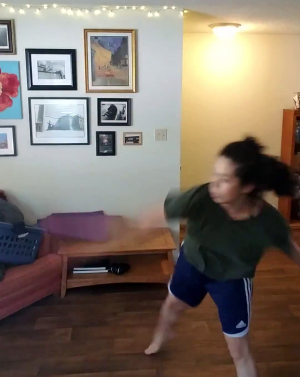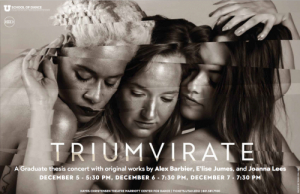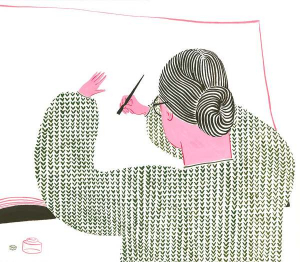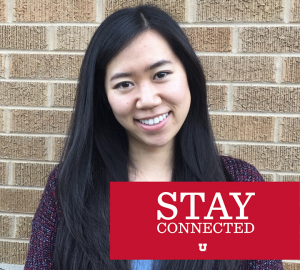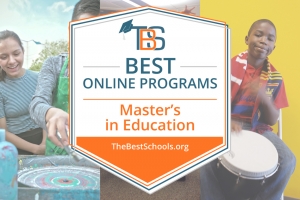Displaying items by tag: Masters Program
By Emeri Fetzer
Despite classes and collaborative work moving online, Jordan Boge is triumphantly reaching the finish line for his short subject documentary film, “Turtle.”
For Boge, a graduate student in the University of Utah Department of Film & Media, the project has been a main focus throughout the academic year, beginning in August with pre-planning. Boge’s team wrapped up filming for the documentary in February, right before a global pandemic changed our daily lives. “ I feel extremely fortunate because nothing of the film has been compromised,” Boge explained.
“For post-production in particular, it is entirely common to work digitally,” Boge continued. “I used to work at CNN in Atlanta, and we would regularly overnight hard drives of the physical footage to our editors in New York. It is standard in the production world to make it work remotely.”
Of course, Boge and his collaborators have missed being together to fine-tune a project in which they are all deeply invested. These shared moments are often the most enjoyable of a team’s process. But they have kept close contact over phone and video chat, finalizing color grading and score adjustments, and have reflected together about what made the documentary unique. 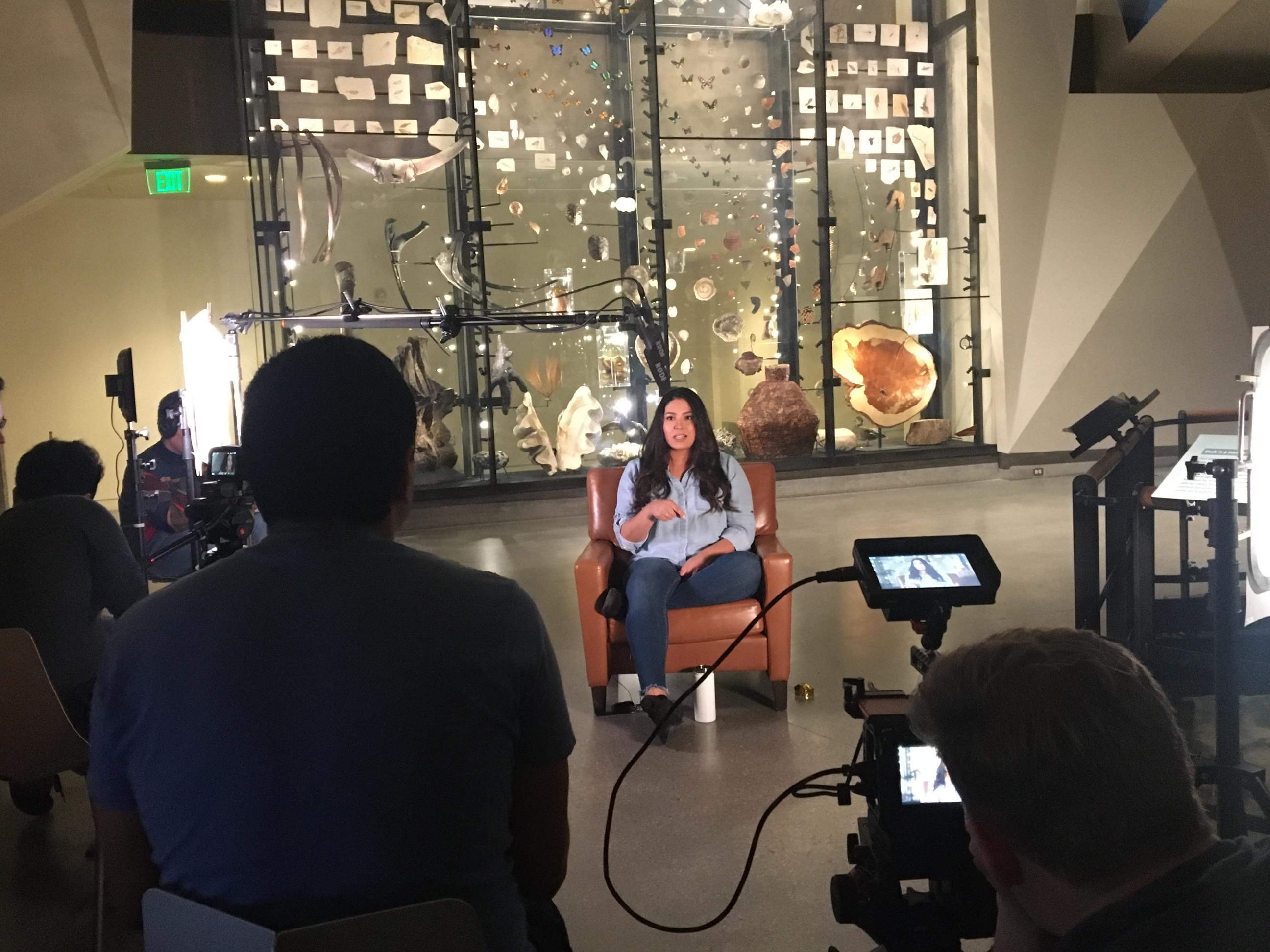 Behind the scenes of "Turtle" | Courtesy Jordan Boge
Behind the scenes of "Turtle" | Courtesy Jordan Boge
“Turtle” follows the daily life of Pamela Cornejo, a PhD student at the U in counseling psychology, and a close friend of Boge’s, whom he finds particularly inspiring. “I knew I wanted to make a documentary for Sonia and Miriam (Sobrino’s) class. Right before I left last summer to work for a film company in LA, I was spending time with Pamela and she shared a bit of her background and story. I spent the whole summer thinking about it.”
Cornejo is a child of Mexican immigrants and Boge wanted to make a film about who her family is and how it continually impacts who she is as a person. “I was expecting a ‘no’ from her,” Boge said. “Who agrees to have someone just make a documentary about them? I don’t think most people see the interest in their own story.” Luckily, Cornejo agreed right away and showed immense vulnerability and openness while filming.
For Boge, this was the best part. “We did an on-site interview the second day of filming, after following her at work with her middle school students. She was having a hard day and began to bare her feelings. It was a two-hour interview, but I ended up using bits of all of it for the six-minute film,” he said.
“I really wanted to make sure that the story I was telling was as true to her view as possible. She was great about recognizing that I was the filmmaker and she was holding the story. We had a great push and pull between knowing what was best for the film and what was best for her story.”
Boge collaborated with several other students in the Department of Film & Media Arts. The film’s cinematographer, JJ Houghton, is an undergraduate senior. In reflecting, Houghton pointed out that the most rewarding piece of the project was Cornejo's authenticity on and off-screen. “In the B-roll of her day to day activities, to see her interacting with the people around her as if there was no camera there -- it’s what a documentarian is always hoping for, to present an idea in the least biased way possible.”
Both Boge and Houghton shared that the mutual care shown by all of their teammates was imperative to making their project worthwhile. “It’s a unique thing as a graduate student -- this is going to be part of my thesis portfolio that I defend, so it’s not just some project for a class, it’s a means to get my degree,” Boge said. It was important to him that all involved faced the film with intention and not just like any other gig. 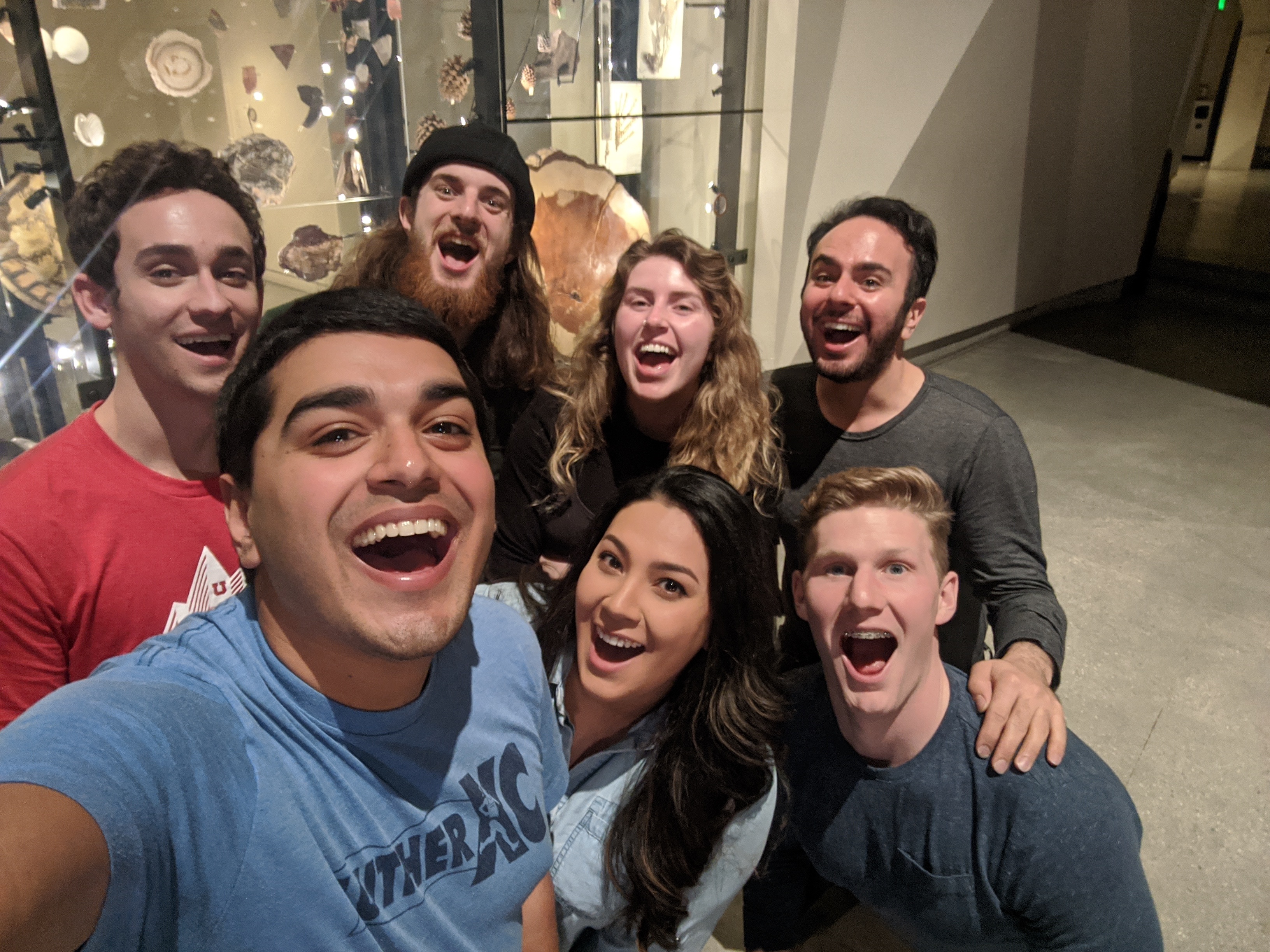 "Turtle" crew poses after wrapping an interview | Courtesy Jordan Boge
"Turtle" crew poses after wrapping an interview | Courtesy Jordan Boge
“The joy is that this piece is an expression of who I am. It’s a film made for people of color. I took care with nuance and I want those people to see it and have themselves reflected in it in some shape or form.”
Boge is looking forward to sharing “Turtle” with the community at the first possible opportunity for a screening in the Department. Stay tuned for updates!
"Turtle" Credits:
Director: Jordan Boge
Documentary Subject & Producer: Pamela A. Cornejo
Cinematographer: JJ Houghton
Graphic Artist: Kait E. Gollmer
By Jessica Boone
Suspended in chaos and uncertainty, we root to what we know. But what happens when we are studying an art form that depends on shared spaces, experiential learning, and community? We keep dancing.
I have struggled to gather the right words to describe our current situation. The School of Dance’s online classes are in full swing. And just as we settle into a new ‘normal,’ the end is in sight.
I am a first-year graduate student in the Master of Fine Arts in Modern Dance program. It has already been a year of bumpy transitions, but I could never have guessed the school year would end with this upheaval. Dance has grounded me before, and it grounds me now in changing ways.
My professors have been flexible and receptive. They are encouraging, offering ways to challenge us creatively, but with great kindness, they acknowledge the real struggle we are all facing. There is a mutual understanding and respect in knowing we are all doing our best. We are doing our best to show up for ourselves and each other.
I am deeply grateful for the synchronous physical practices. Yes, that means live dance classes on Zoom in my cleared out living room. Though it will never compare to being in the same place as moving bodies engaged in physical exploration, it is the closest we can get at this point. I am happy to move my body with others, see friendly faces, and have some semblance of normalcy. On a base level, it reminds me that I am not alone.
I was visiting Austin, Texas, over our spring break when the dangerous reality of the pandemic escalated. After the announcement that our classes were moving online, I decided to stay put. I spent time grieving the loss of my routine and home inside of the Marriott Center for Dance building. I mourned the loss of face-to-face interaction and body-to-body learning.
I was skeptical of continuing my dance studies online. As a graduate student, I had the privilege of listening in on conversations our faculty were having as they reimagined plans for our classes. I was relieved and reassured by their commitment to finding new ways to support and engage students creatively. I sensed their focus on grace and humanity, as they too were navigating the same shocking shift of daily life.
My worries further eased as my professors reached out to discuss class plans moving forward. Each of my classes developed unique methods for meeting and completing course work. I have classes that meet live online at the same scheduled time as they always have. While communication and learning for other courses are all virtual through videos, discussion boards, and submitted writings. Some classwork is structured, with deadlines, other assignments I work on at my own pace.
I am deeply grateful for the synchronous physical practices. Yes, that means live dance classes on Zoom in my cleared out living room. Though it will never compare to being in the same place as moving bodies engaged in physical exploration, it is the closest we can get at this point. I am happy to move my body with others, see friendly faces, and have some semblance of normalcy. On a base level, it reminds me that I am not alone.
Still, continuing classes has been hard. Focus and motivation are often stubborn to rally. And though dancing doesn’t always feel good right now, I am trusting the lessons it has taught me in the past. I think the dance community will understand when I saw we have always relied on community – we know we need each other. We know how to adapt and improvise – we are resilient. We know how to listen patiently with our whole selves. We know how to tune into our bodies, how to care of them and the bodies of others. We know how to use our energy to propel us forward, to soften our joints, to brace for impact and heavy lifting. We know how to relish moments of joy and abandon when they come.
These are distressing times, but I am hopeful. Though I am relatively new to the University of Utah and am finishing the semester states away, I feel supported by a network of faculty and peers that is rooting for my well-being, my academic success, and the endurance of our broader arts community.
Author Jessica Boone is a first-year graduate student in the School of Dance Masters in Modern Dance program.
Graduating Modern MFA Students Present "Triumvirate"
On December 5th, 6th, and 7th, in their final year of study at the University of Utah, the graduate students in the Modern Dance Masters of Fine Arts Program, invite you to attend "Triumvirate," their thesis concert in the Marriott Center for Dance’s Hayes Christensen Theater.
This culminating performance reveals the diverse creative research undertaken by the graduating students over the past three years.
In "Take This With You," Alexandra Barbier presents an interactive solo and group installation performance, which aims to disrupt the existing traditional relationships and roles between dance audiences and artists.
"Parachute Princess" is an intimate, interdisciplinary duet by E’lise Jumes. This research uses movement and sound to find what emerges when memory is used to create knowledge -- then resulting in realizations and constructed narratives of a multi-faceted self.
Joanna Lees presents "B E C O M I N G," which portrays a dynamic group of sixteen women manifesting power in the body by pushing the limits of their physical capacities. The work explores how empowerment can be achieved through superheroine narratives, concepts, themes, and physical ideas.
"Triumvirate" runs approximately 90 minutes long, and is free and open to the public.
Performance times include:
Thurs. 12/5 @ 5:30pm
Fri. 12/6 @ 7:30pm
Sat. 12/7 @ 7:30pm.
MFA Artists Invite the Public Into the Studio
"The skill of being able to present and discuss your creative practice and research with the public is a vital part of an arts education and an open studio event is the perfect way to help our students fine-tune those skills," explains Lewis J. Crawford, Assistant Professor of Art & Art History.
"Every fall semester the faculty of the Department of Art & Art History ask our graduate students to conduct an open studio event. We invite the university community and public to tour our graduate studios, view the students’ artwork and research, as well as engage in direct criticism and dialogue about the work. It is a great opportunity for our graduate students to network with the larger Wasatch arts community, gallerists, and collectors."
This week, seven MFA candidates in the department of Art & Art History will invite the community to take a closer look at their indiviudal artistic processes in a tour of their campus studios. Visitors can explore the artists' diverse styles and also learn about the context, themes, and techniques underlying the final art works.
MFA candidate Kylie Millward reveals, "This semester I am working on projects that serve a purpose of empowering females, specifically young girls. That includes writing and illustrating a children’s book, designing a board game, animating gifs and creating single-image illustrations. Some of my recent work shines a light on issues within religion, with the hopes of creating a dialogue to inspire change."
For Hannah Nielsen, painting extends expression around the human experience. "I focus on oil painting as a medium to discuss internalized experiences. Currently my theme is centered around expressing self-doubt and anxiety as interactions with the body and self. I am also working to include elements of kinetic movement and audience interactivity in my pieces, though that, as everything, is a work in progress," Nielsen shares.
Dana Hansen's scupltures mirror the mind's ability to alter personal reality: "I attempt to represent an accepted reality, the seen and the unseen. By using alternate realities, digital processes and the basis of the digital reality manifested in our physical realm (the wireframe) I try to connect what we physically are and appear as to the unseen experiences, memories, and thoughts that churn over time."
It is clear that there is more to be discovered within each of the MFA artists' work.
The MFA open studios are a rare opportunity for artists, both within the visual arts and across the performing arts, to connect in person -- sharing process and challenges, revelations along the way, and the ultimate impact of one another's work. These occasions for dialogue enrich the experience outside of the classroom and punctuate the many hours of solitary practice.
Come see the developing work of Etsuko Kato, Kylie Millward, Dana Hansen, Hannah Nielsen, Holly Nielsen, Bryce Billings, and Candace von Hoffman on view from 5-7 pm on Wednesday, October 16th in rooms 171, 343 and 364 in the Art building.
Stay Connected: Mariko Azuma
Mariko Azuma earned Bachelor's degrees in Art & Art History and Asian Studies with a minor in Japanese from the U. She then went on to earn her Master’s degree in Art & Art History in 2018.
During her graduate studies, Azuma focused her research on preservation and authenticity in Chinese architecture. This year, she is embarking on 10 months of intensive training in advanced Japanese at The Inter-University Center (IUC) for Japanese Language Studies in Yokohama, Japan through a fellowship program sponsored by the Nippon Foundation. We caught up with her to learn more about her experience.
What prompted your interest in the IUC program?
I had heard about the effectiveness of the IUC program from my graduate thesis chair and had also heard about it from other professors. The program's well-established history of Japanese instruction to those interested in careers in research/academia and its rigorous curriculum for specific fields of study, like art history, were of interest to me.
What are some highlight moments so far? 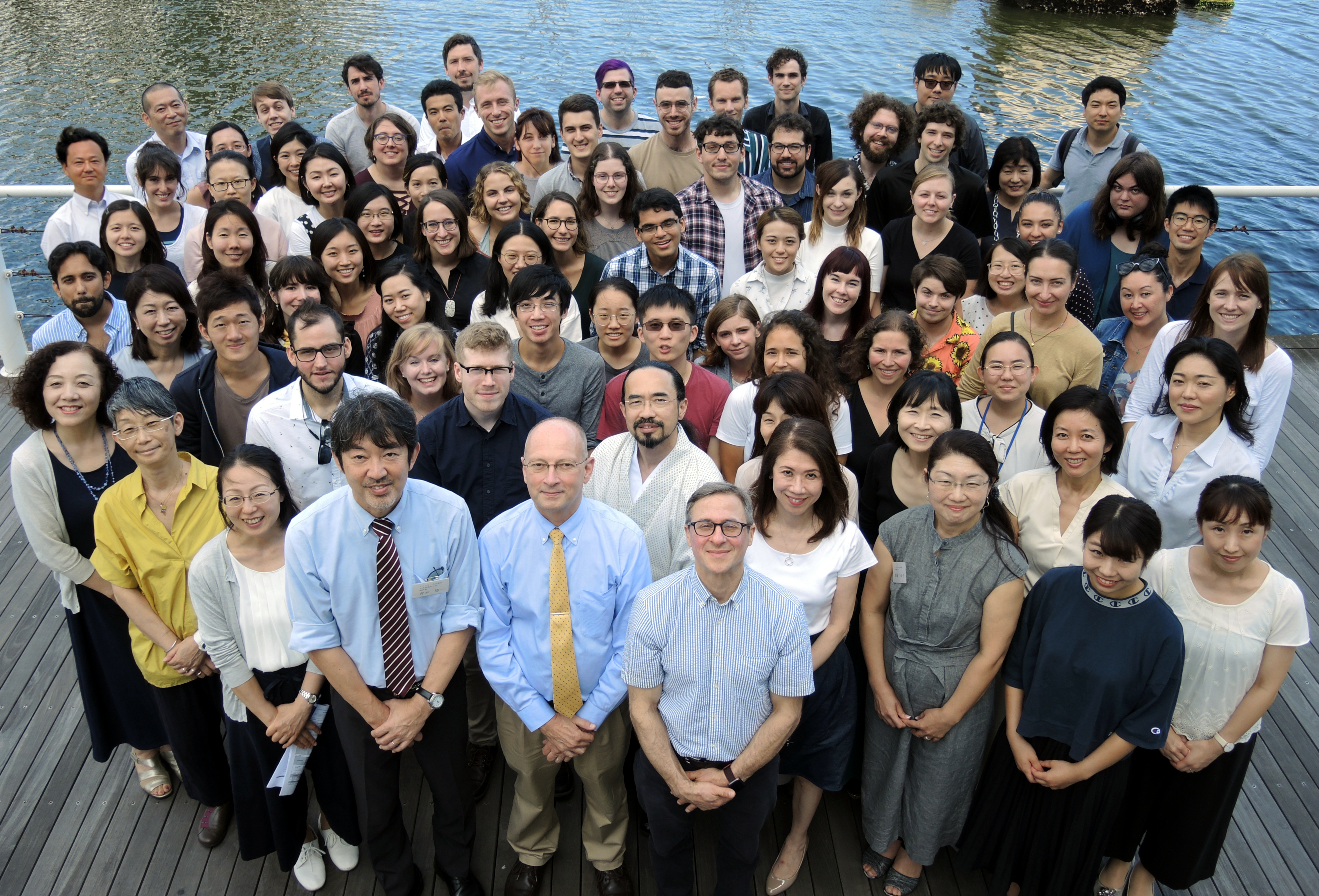 IUC Class of 2019-2020
IUC Class of 2019-2020
I have been enjoying the IUC community here in Yokohama, whom I am realizing will continue to be involved in my network of Japan related studies even after the IUC program ends. I have been meeting students involved in vast areas of study from history, literature, law, translation, and medicine and it has been very intriguing to hear about how Japan ties in to each of these interests. Everyone has been very supportive and encouraging and I am looking forward to continuing to improve my Japanese alongside these students.
What has been most surprising?
I knew that the IUC program would be fast paced and rigorous, but it has been surprising to see how much I feel like I am already learning and improving. I am getting more and more used to speaking, listening, reading, and writing Japanese, that I recently realized that I haven't spoken English in quite a while and Japanese is feeling more natural! "
What are your future plans for your research?
I hope to continue researching some ideas that have stemmed from my Master's thesis which relate to concepts of authenticity in the preservation of architecture. I would like to focus on traditions of regional and vernacular architecture in Japan and how those structures are preserved and renewed for continued enjoyment. Furthermore, I would like to look at how preservation affects not only the tangible structure but the ideas surrounding culture, identity, and space. Viewing architecture from an art historical perspective has been such a fascinating approach and I hope to continue being involved in highlighting the value and complexity found in them.
We love connecting with our alumni and hearing about how their lives have transformed since graduation.
Are you an alum of the College of Fine Arts and want to connect?
Fill out this online form and share your news and advice!
The U's MAT-FA program ranked as the 11th best online Masters of Education Program in the nation
We are thrilled to annouce that the University of Utah's Master of Arts in Teaching with an emphasis in Fine Arts (MAT-FA) has been ranked as the 11th Best Online Master's Program in the nation TheBestSchools.org. The criteria for putting a school on this list includes the reputation of the school and its faculty, its dedication to a broad liberal arts education, its accreditation, and its overall academic caliber compared to other institutions of the same type within the same state.
The U’s online master of arts in teaching fine arts degree includes 30 credits of coursework, and participants can complete the program in two years. The program emphasizes pedagogical knowledge and skills applicable to fine arts instruction. Students complete 18 credits of content to support two 12-day summer residencies on the university’s main campus. The remaining 12 credits consist of online classes completed during the fall and spring semesters. Students also focus on areas of fine arts teaching theory and practice during three teaching practica at local or regional partners. This program offers licensed educators the opportunity to enhance their current skills and advance in the field. Professional artists, arts education scholars and researchers, curriculum designers, directors, and arts advocates can also benefit from enrolling in this program.
“I haven’t found another master degree program like this. It focuses solely on teaching in and through the arts. I am a single mom, so the hybrid-online structure allows me the opportunity to continue working and providing for my family. This program has inspired me as a teacher in the field of arts education in ways I didn’t even imagine.” Heidi Green, Elementary Music Education Teacher.
“This is one of the first programs that dealt with teaching the arts. I researched the faculty and realized the broad spectrums of expertise they bring in the field of arts education, knowledge that I am really excited to learn.” Chad Zielinski, Secondary Visual Art Teacher.
Want to learn more about the program? Vsit here.

